Thu, 12 Jun 2014 . Last updated Fri, 08 May 2015 21:34
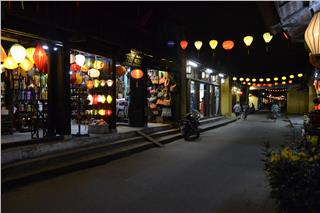
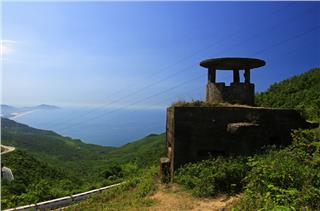
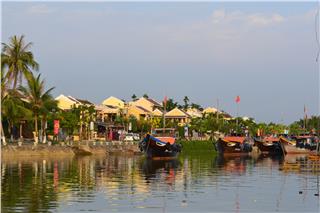
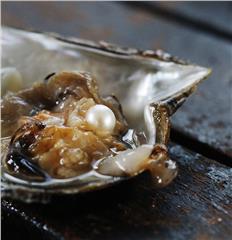
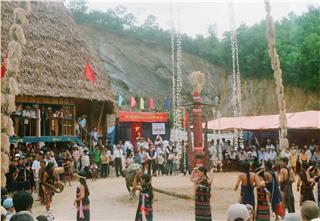
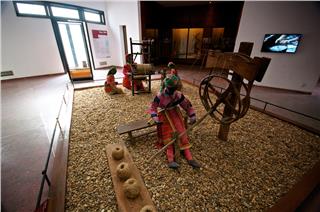
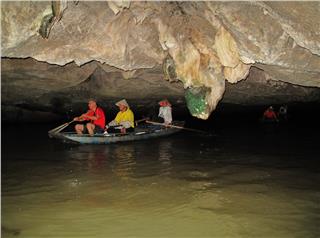
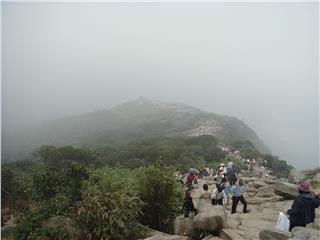
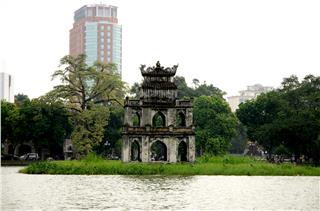
Today, we're going to travel Hoi An attractions, which is famous for its ancient beauty, charming beaches, perfect services and kind people. Hoi An has become the most popular tourist site of Vietnam. Hoi An is well known for historical and architectural values and long-standing culture. Moreover, Hoi An is known as Venice of Vietnam due to the small river flowing across the heart of the city. Due to the perfect services and friendly people, Hoi An is seen as a paradise for tourists.
Searching for information on the Internet, I found Free Tour, a free tourist service offered by local students. This free service is warmly received by foreign tourists. Students studying or doing jobs related to tourism will be your tour guides free of charge. This job gives them the best lessons on the major they're following. Now, we are about to ride bicycles to Kim Bong traditional craft village. Participating in the Free Tour, the only charge that you have to pay is to rent vehicles or support local people. As for this journey, I only pay VND 30000 for renting a bicycle. That's such an ideal price for a half-a-day trip to learn about the traditional culture of the city which is recognized as a world heritage. In this tour, I have a chance to see beautiful streets of Hoi An Ancient Town.
Reporter: Will we leave the bicycles here?
Tour guide: No we’ll take them on the boat crossing the river to Kim Bong village.
Reporter: In addition to transporting tourists to Kim Bong village, do these boats also serve local people?
Tour guide: Yes.
Reporter: How much does it cost for each turn?
Tour guide: As for the local people without taking the motorcycle, the charge is VND 1000 / person. If you take a bicycle or a motorcycle, the charge will be VND 3000. Foreign tourists have to pay VND 10.000 / person. Tourists can cross the river on other boats. However, they prefer this boat because of the cheap price, and chances to experience local life.
Today, we're about to have a lot of interesting experiences. It takes us 10 minutes to travel from Hoi An Town to Kim Bong Village. I had an interesting experience on the boat and really admired the boatman. Tourists can across the river on tourist boats, however, they still prefer these boats of local people because of the cheap price and chance to experience local life. Today, we are about to have a lot of interesting experiences. Stay tuned, please.
Foreign tourists feel very interested when experienced on these boats. They are immersed into the daily life of the local people. Tourists and the destination are linked together. Thank you.
It takes us 10 minutes to travel from Hoi An Old Town to Kim Bong Village. We had an interesting experience on the boat and really admired the boatman. They are very ingenious in the arrangement of vehicles to ensure the safety of passengers on the river.
The first destination of the journey is a shipbuilding shop. This is one of the biggest shipbuilding shops in Kim Bong Village. As the history of the village, in the 16th century, people from Thanh Hoa came settling down here and founded this village. There are families such as Huynh, Phan and Mai. They established the craft villages such as building ships, houses and making wooden furniture. Today, the carpentry in Kim Bong still conserves three jobs above. We are about to visit a shipbuilding shop.
We are going to visit another shop in Kim Bong Village. We are at the shop of craftsman Huynh Ri who was given a UNESCO certificate for preserving the culture of this craft village. Now, Huynh Ri’s son, Huynh Suong is in charge of the shop. Let’s go inside to contemplate the works made by the son of Huynh Ri.
Reporter: What are the most special features of this work?
Tour guide: You can see a lot of dragons on this work. According to Huynh Suong, the owner of the work, he sculptured 1000 dragons of the Ly Dynasty. And on this work, you can see famous sites of Hanoi. This is the One – Pillar Pagoda and this is the Temple of Literature, the first university of Vietnam. This work reflects the solidarity among the people in Vietnam. It has the shape of a gourd, reflecting the solidarity of Vietnamese peoples.
Leaving the famous shop of Huynh family, Hai takes me to the house of another villager. Here, I am about to learn how to make “banh trang” or rice paper in the other name. Now, he will teach you how to make “banh trang” and Quang noodles. The stages seem similar to those in making rice paper wrappers in the North. Can I try? After the flour is done, we cut it into small pieces to have noodles, right?
Firstly, the flour must be soft. And then, when taking the rice paper out of the pot, we have to be careful or it will be broken. We have to wait until the rice paper cools down. Here is the product. We will cut it into small pieces to make noodles. Now, we will try cutting the rice paper into small pieces.
After the rice paper is done, she will cut it into small pieces to make noodles. This is the traditional method using knife. All stages are done manually. Can I try it? The noodles I make are not even. This work is hard to do. Could you please finish it for me?
This is a “dap” cake. A wet rice wrapper is inserted into the two layers of a baked rice wrapper and beaten up. The wet rice wrapper is soft and the baked rice wrapper is crispy. It tastes like sesame candy of Hue but much better. This cake is very suitable to eat in the hot weather because it is cool and easy to eat.
To understand more about Hoi An, one of Vietnam destinations, we have a talk with the Writer Doan Le, who has a lasting attachment to this land and loves this ancient city a lot.
Reporter: Could you tell me more about our first destination today?
Doan Le: This is Cau pagoda, because it’s like a mixed structure of the pagoda and the bridge. It is officially named Lai Van Kieu. The bridge was built earlier by Japanese to facilitate trading activities when living here. 50 years later, the pagoda was built to worship Bac De God. This pagoda is also the place communicating between the Chinese and Japanese. To the Tokugawa Shogunate, he required all Japanese people living aboard had to return Japan. They came back and left this pagoda. This pagoda is linked to a legend about a dragon whose head is in India, body is here ad tail is in Japan. Therefore, when its tail moved, earthquakes would occur in Japan. The Japanese believed that they had to look for the weakest point of the dragon to control it. Otherwise, it would cause earthquakes in Japan. Their geologists traveled a lot and found out that this place was its weakest point. They built a pagoda here, which symbolized a sword to control the dragon. According to researchers, this holy animal symbolizes the trading route of European people throughout northern Asia. Their first destination was India, so the head of the dragon was in India. At that time, Hoi An was a busy commercial port of the South. All boats from Europe that traveled to Northern Asia and Japan stopped here to buy silk and get fresh water and food. Japan was their last destination; therefore, the tail of the dragon was in Japan. Reporter: This is the statue of a dog here. Is the dog a holy animal of this pagoda?
Doan Le: This pagoda was built by Japanese people, so these animals were also created by them. According to the legend, two dogs are worshipped at this end and two monkeys on the other end.
This pagoda was built during 3 years from the year of the Monkey to the year of the Dog. Actually, Japanese constructors said that it was only the legend related to the conventionality of some people settling here. Those who believed in these holy animals as dog and monkey worshipped them in this pagoda.
The bridge was built by the Japanese people. Meanwhile, the pagoda was built by Chinese people 50 years later to worship Bac De God - the Emperor of the North. They believed that the God could control the river water level. Because Hoi An is located in a low-land area and is flooded every year. This pagoda also used to be a meeting place of Chinese people and Japanese people to deal with disputes, if any.
The last destination we reach is a relic site that few visitors to Hoi An know. That is Ba Mu pagoda. This is the gate of the site. The three-stepped gate is now blocked. Behind the gate is a big pagoda, the only relic of Cham Pa Culture in Hoi An, which was the convergence place of 4 cultures of Champa, China, Vietnam and Buddhism. The Buddha's hand-shaped statue represents Buddhism culture. Quang Nam used to be part of the Cham Pa Kingdom. Therefore, there remain several relics of this period in Hoi An.
Reporter: What are the outstanding features of Cham Pa culture and what are its influence on local culture in Hoi An?
Doan Le: The round gate and the top of the gate are typical of Cham Pa culture. When I was small, Ba Mu Pagoda used to be an outstanding symbol of Cham Pa culture.
Reporter: Does this relic associate with your childhood?
Doan Le: Yes. It is a pity that the rear of the pagoda has been destroyed. The Government is trying to restore this part. Before, there was a very nice lake here. Hopefully, this relic will be restored soon.
Reporter: Let’s move on to have a better look at the only relic of the Cham people in Hoi An.
Experiencing the daily life of Hoi An people, listening to them telling stories of the local architectural structures and their beautiful homeland. I understand the talent and the nice characters of local people. Hoi An has been built and developed for nearly 5 centuries by the local people. Hoi An develops tourism without losing its cultural identity. Throughout the historical upheavals, the personality of Hoi An people remains unchanged. They're still friendly and hospitable and loyal to family manners. Hoi An doesn't develop into a modern city. The city is crowded but peaceful without developing tourism services on the large scale. That’s Hoi An. Along with its old quarter, the rural landscape in Hoi An has a strong appeal to visitors. The harmony of all cultural values of the old quarter, humanity values and well-preserved natural resources will create a lasting value of Hoi An in the mind of visitors.
To maintain Hoi An as a friendly and hospitable land to visitors. Hoi An people should sacrifice their short-term profit to retain visitors. In Hoi An Vietnam, there are many "strange" rules, for example tourism services are not developed to satisfy the demand of visitors. The development should serve social benefits. Opening large-scale hotels and providing A-Z services are not allowed. All travel companies have to implement under the regulation, otherwise, all revenues would go to very few investors and locals will not benefit from the values, they are treasures for generations.
Hoi An is always fragile. Cultural values and rustic features of Hoi An are still maintained in the lifestyle of Hoi An people. Any hustle and bustle will harm this place. Providing popular tourism services cannot ensure a sustainable development. Hoi An is unique, which attracts customers. In the past, the old quarter night festival was held monthly. Currently, this event is held every week. Hoi An lantern is a typical souvenir of Hoi An. It is also a symbol of the old quarter night festival. Toy figurines of street vendors are also an outstanding feature of this place. They are the main feature of Hoi An's knowledge-intensive tourism.
In Hoi An, rural areas don't turn into urban areas. The Cham Islands are kept intact. There is no high-rise hotel. Therefore, visitors to Hoi An can enjoy different shades of emotion. Visiting the old quarter, they're attracted by ancient cultural values. It takes only10 minutes to ride from the old quarter, visitors can admire the tranquil countryside with ripening paddy fields, luxuriant orchard gardens and nice local people. Visiting the Cham Islands, they can commune with wild nature. These forms of tourism are seen as the best ways to keep Hoi An alive forever.
Source: NETVIET - VTC10

 Đặt vé máy bay cho người Việt?
Bấm vào đây
Đặt vé máy bay cho người Việt?
Bấm vào đây
Our service uses cookies for technical, analytical and marketing purposes. See our Cookie và Privacy policies for more information. If you agree to this, just keep browsing.


